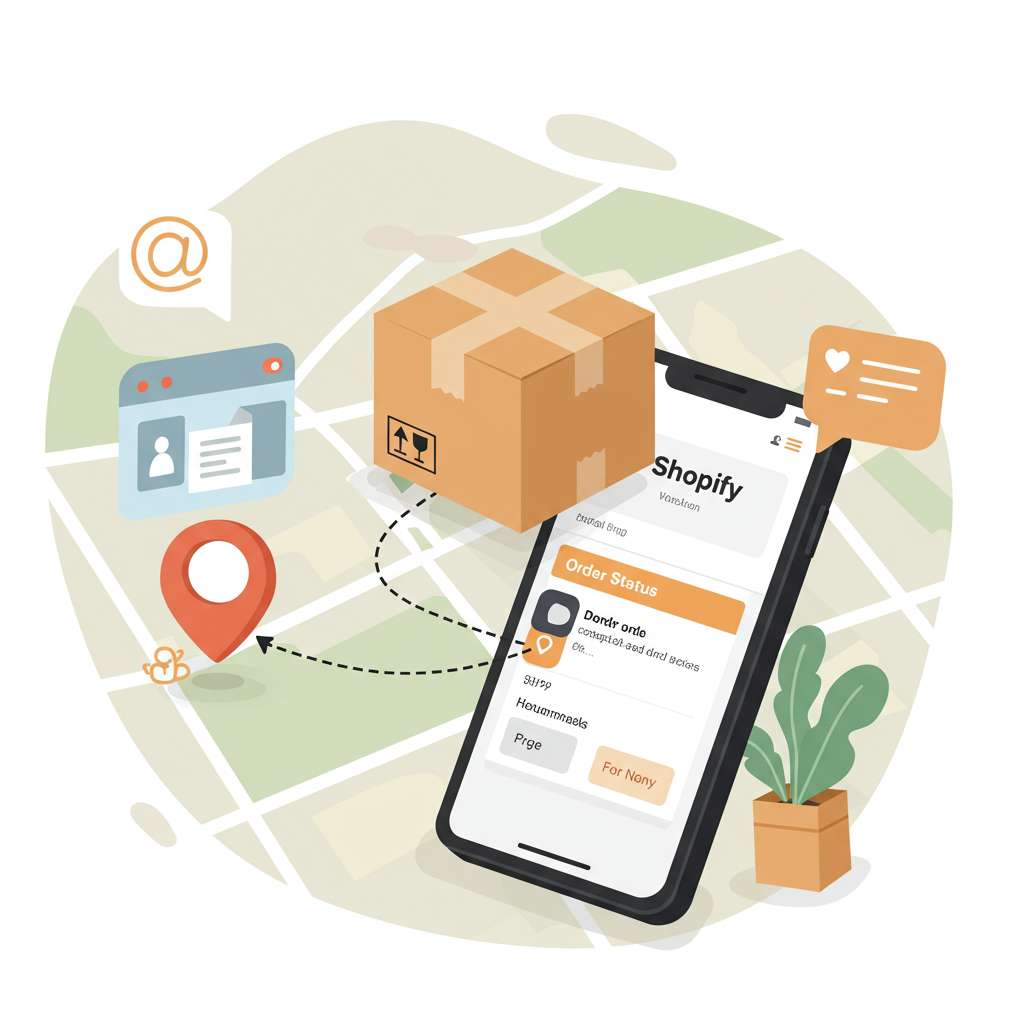Elevate Customer Experience and Streamline Operations with Seamless Tracking Integrations.
As a Shopify merchant, I know firsthand the excitement of a new order. But that excitement quickly shifts to the crucial phase of fulfillment and delivery.
Once an order leaves your warehouse, the customer’s journey isn’t over; in fact, a new, critical phase begins: waiting for their package.
This waiting period, if not managed well, can become a source of anxiety for customers and a drain on your support resources.
That’s where robust order tracking comes into play. It’s not just a nice-to-have; it’s an absolute necessity in today’s e-commerce landscape.
I’ve seen how effective order tracking can transform a good customer experience into an exceptional one, fostering trust and encouraging repeat business.
Think about it from your customer’s perspective. They’ve just spent their hard-earned money, and they want to know exactly where their purchase is at all times.
Providing clear, real-time updates on their order’s journey significantly reduces “Where Is My Order?” (WISMO) inquiries.
These WISMO calls and emails can quickly overwhelm your customer service team, diverting their attention from more complex issues.
By proactively offering tracking information, you empower your customers, giving them peace of mind and reducing the burden on your support staff.
Beyond customer satisfaction, effective tracking also offers significant operational benefits for your business.
It allows you to monitor delivery performance, identify potential shipping issues early, and even analyze carrier efficiency.
Shopify, by default, offers some basic tracking capabilities. When you fulfill an order and add a tracking number, Shopify links it to the carrier’s website.
Customers receive an email with this tracking link, which is a good starting point. However, this native functionality has its limitations.
The tracking experience often redirects customers away from your store to a generic carrier website, which can be jarring and lacks your brand’s touch.
Furthermore, the updates might not be as granular or as user-friendly as customers expect, especially if they’re tracking multiple items from different carriers.
This is precisely why integrating a dedicated order tracking solution becomes invaluable for any serious Shopify merchant.
These third-party applications are designed to enhance the tracking experience far beyond what Shopify offers out-of-the-box.
They typically provide a branded tracking page, allowing customers to check their order status directly on your website, maintaining brand consistency.
Key features to look for in such a solution include multi-carrier support, real-time status updates, and customizable notification triggers.
Imagine sending automated emails or SMS messages for “In Transit,” “Out for Delivery,” or “Delivered” statuses, all branded with your logo.
Some advanced solutions even offer delivery exception alerts, notifying both you and the customer if there’s a delay or an issue with the delivery.
This proactive communication can turn a potential negative experience into a positive one, as you’re seen as being on top of things.
So, how do you go about integrating one of these powerful tracking solutions into your Shopify store? It’s usually quite straightforward.
The first step is to research and choose an app that aligns with your business needs and budget. Popular options often include AfterShip, Trackr, or ParcelPanel.
Once you’ve selected an app, the installation process typically involves a few clicks from the Shopify App Store.
After installation, you’ll usually connect your shipping carriers within the app’s settings. This allows the app to pull tracking information directly from them.
Next, you’ll configure your branded tracking page. This often involves adding your logo, choosing colors, and customizing the layout to match your store’s design.
Don’t forget to set up your automated notifications. Decide which status changes trigger an email or SMS, and customize the message content.
Finally, and crucially, test everything! Place a dummy order, fulfill it, and track it yourself to ensure the entire process works seamlessly from the customer’s perspective.
Beyond the technical setup, there are best practices I’ve learned that maximize the benefits of order tracking.
Always communicate clearly where customers can find their tracking information, whether it’s in their order confirmation email or on your website.
Set realistic expectations for delivery times. Over-promising and under-delivering, even with perfect tracking, can still lead to disappointment.
Leverage the data provided by your tracking solution. Analyze delivery times, common issues, and carrier performance to optimize your shipping strategy.
Consider using tracking data to re-engage customers. Once an order is delivered, it’s a great time to send a follow-up email asking for a review or offering a discount on their next purchase.
Proactive customer support is key. If you see a delivery exception, reach out to the customer before they even notice it. This level of service builds immense loyalty.
Some advanced integrations even allow you to use webhooks to pull tracking data into your own CRM or analytics tools for deeper insights.
This can help you identify trends, predict potential issues, and even personalize future marketing efforts based on past delivery experiences.
In my experience, investing in a robust order tracking integration for your Shopify store isn’t just about convenience; it’s about building a stronger, more transparent relationship with your customers.
It transforms the post-purchase experience from a potential pain point into another opportunity to delight and impress.
What are your thoughts on the importance of order tracking for your e-commerce business? I’d love to hear your perspective.
By providing clear, consistent, and branded tracking information, you’re not just delivering packages; you’re delivering peace of mind and reinforcing your brand’s commitment to excellence.






